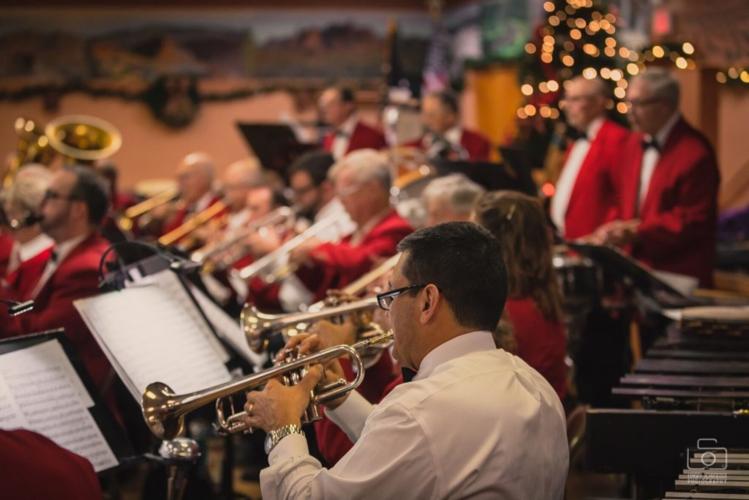Tucson Symphony Orchestra is “rach”ing out this weekend with Rachmaninoff’s Symphony No. 2, a behemoth work that the orchestra programs every seven or eight years.
In this case, it’s been 11 years since the orchestra last performed the symphony. Back in 2013, it anchored a program conducted by Guillermo Figueroa, who was vying to be the TSO’s music director to replace George Hanson.
Figueroa, who had guest-conducted the orchestra twice before throwing his baton in the ring for the music director job, also showed off his violin prowess, performing a violin concerto written for him. The audience and orchestra loved him, but Figueroa lost out on the role to TSO Music Director José Luis Gomez.
Fast-forward more than a decade, the piece is back with the Knoxville Symphony Orchestra’s music director Aram Demirjian guest conducting.
Demirjian opens the concert with Sonora, Mexico, composer Arturo Marquez’s frenetically joyful, hip-swinging “Conga del Fuego,” followed by Florence Price’s Violin Concerto No. 1, with Bulgarian-American violinist Bella Hristova soloing.
The concerto might be the most exciting thing on the program. It could be the first time that Tucson audiences hear Price’s piece; the mid-20th century African-American composer is just now starting to get the recognition her music has long deserved. And it will be the first time Tucson hears Hristova, the Bulgaria-born violinist who has distinguished herself with a diverse repertoire.
Price’s concerto fits that bill. She was the first African-American female composer to have her work performed by a major orchestra, but the concerto, composed in 1939, was never performed in Price’s lifetime. She died of a stroke in 1953 at the age of 66.
It wasn’t until 2009 that Price’s music was rediscovered, found buried in a pile of papers in an abandoned Illinois home where she spent summers. In the years since, orchestras nationwide have been performing her works. In addition to the TSO, St. Andrew’s Bach Society included Price in its summer series last year and mezzo-soprano Sasha Cooke performed Price’s song “Night” in her 2022 Tucson Desert Song Festival recital.
The orchestra will perform the concert at 7:30 p.m. Friday, Feb. 16, and 2 p.m. Sunday, Feb. 18, at Linda Ronstadt Music Hall, 260 S. Church Ave. Tickets are $14-$90 through tucsonsymphony.org. The concert runs about two hours with one intermission.
Anvil-centric show

The intergenerational Tucson Concert Band is performing works centered around anvils at its concert on Saturday, Feb. 17.
Tucson Concert Band, meanwhile, is bringing a little rock of its own to the University of Arizona’s Crowder Hall on Saturday, Feb. 17, when it performs a concert of works that prominently feature anvils.
The 70-plus member multigenerational band’s “Music For Anvils” concert includes “The Anvil Chorus” from the second act of Verdi’s opera “Il trovatore,” the scene where Spanish Gypsies strike their anvils at dawn as an homage to hard work.
Other works on the program include Gustav Holst’s concert band staple Second Suite in F for Military Band, whose uptempo third movement, “Song of the Blacksmith,” is anchored by the folk song “A Blacksmith Courted Me;” and Wagner’s “The Invocation of Albereich” from “Rheingold” with anvils prominently featured in the percussion section.
The band rounds out Saturday’s 3:30 p.m. concert with Sousa’s famous “Hands Across the Sea,” Strauss’s “Feuerfest” polka and march king Sousa’s “Foshay Tower,” a work that had been mired in scandal after its namesake commissioner, 1920s utilities magnate Wilbur Foshay, was found to be less than upstanding with his business dealings after the 1929 stock market crash. Foshay was eventually convicted of mail fraud and Sousa stopped playing the march and hid the music at his home in New York. It was not played again until the late 1980s.
Admission to the concert at Crowder, 1017 N. Olive Road at the UA School of Music, is free.






